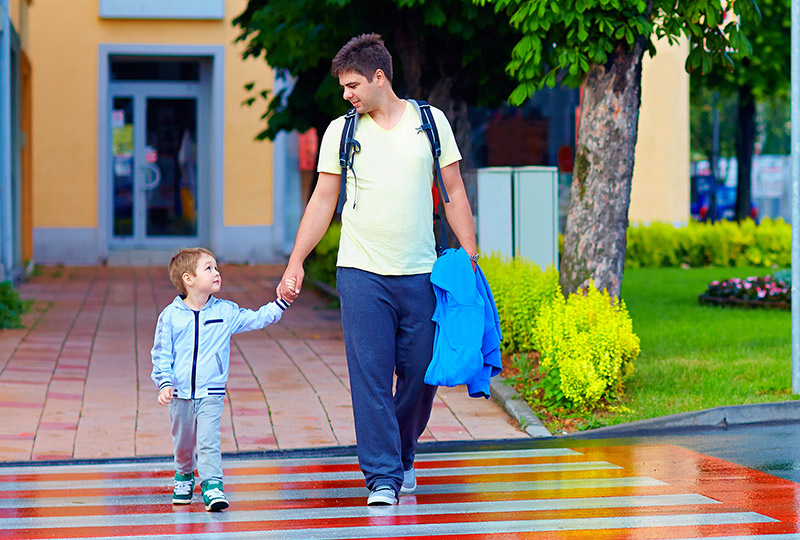Child-pedestrian incidents are increasing as kids go back to school. Here’s how to keep everyone safe.
With some schools in full swing in some counties and revving up in others, drivers need to be on alert for increased foot traffic to help ensure their safety.
An expert at Monroe Carell Jr. Children’s Hospital at Vanderbilt offers safety tips to prevent child-pedestrian injuries, which often increase as routines change upon the back-to-school season.
“The start of the school year is the most dangerous time on neighborhood streets and in school zones for child-pedestrians and bus riders,” said Purnima Unni, MPH, CHES, Pediatric Trauma Injury Prevention Program Manager at Children’s Hospital at Vanderbilt. “I think a big focus needs to be placed on the issue of distractions. Now that the Hands Free Law banning cellphone use has been enacted, pedestrians need to be alert. There are a lot of folks walking and texting and not paying attention to the road.”
Every day in the United States more than 40 children are hit by cars while walking, according to Safe Kids Worldwide. Unintentional pedestrian injuries are the fifth leading cause of injury-related death in the United States for children ages 5 to 19.
Unni hopes new legislation, passed in January, aimed at curbing cellphone use in Tennessee school zones, will help keep pedestrians safer.
“As students head back to school, it’s particularly important to obey traffic laws and drive safely in school zones,” stressed Unni. “Be patient during drop off and pick up if you drive your student to school or drive near a school. The roadways surrounding schools are often congested during these times.”
Overall, Unni urges drivers and pedestrians to be vigilante while traveling in school zones.
“Parents should talk with their children about safe pedestrian practices,” she said. “Walkers should keep their eyes on the road and focus on their surroundings, not on their phones. They should put away their phones and headphones until they reach their destinations.”
The American Academy of Pediatrics offers the following tips for traveling to and from school:
School Bus
- Children should always board and exit the bus at locations that provide safe access to the bus or to the school building.
- Remind your child to wait for the bus to stop before approaching it from the curb.
- Make sure your child walks where she can see the bus driver (which means the driver will be able to see her, too).
- Remind your student to look both ways to see that no other traffic is coming before crossing the street in case traffic does not stop as required. Encourage your child to practice how to cross the street several times prior to the first day of school.
Bike
- Practice the bike route to school before the first day of school to make sure your child can manage it.
- Always wear a bicycle helmet, no matter how short or long the ride.
- Ride on the right, in the same direction as auto traffic and ride in bike lanes if they are present.
- Wear bright-colored clothing to increase visibility. White or light-colored clothing and reflective gear is especially important after dark.
Walking to School
- Children are generally ready to start walking to school at 9 to 11 years of age.
- Make sure your child’s walk to school is a safe route.
- Be realistic about your child’s pedestrian skills. Because small children are impulsive and less cautious around traffic, carefully consider whether your child is ready to walk to school without adult supervision.
- If your child will need to cross a street on the way to school, practice safe street crossing with them before the start of school.

